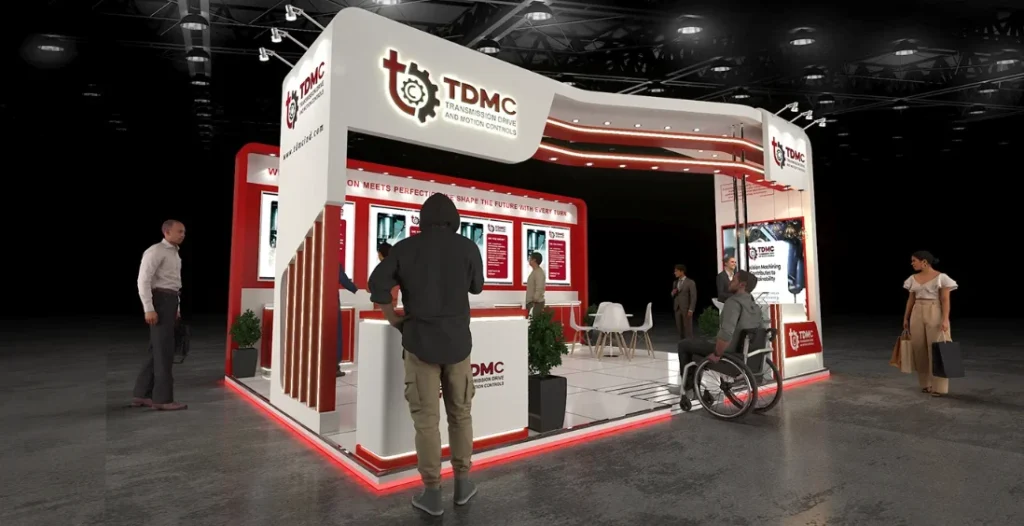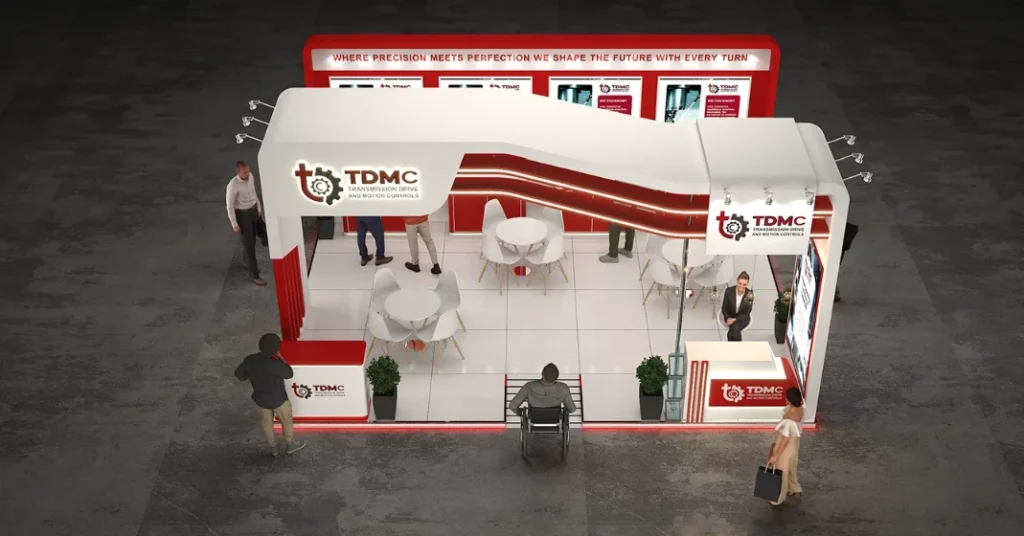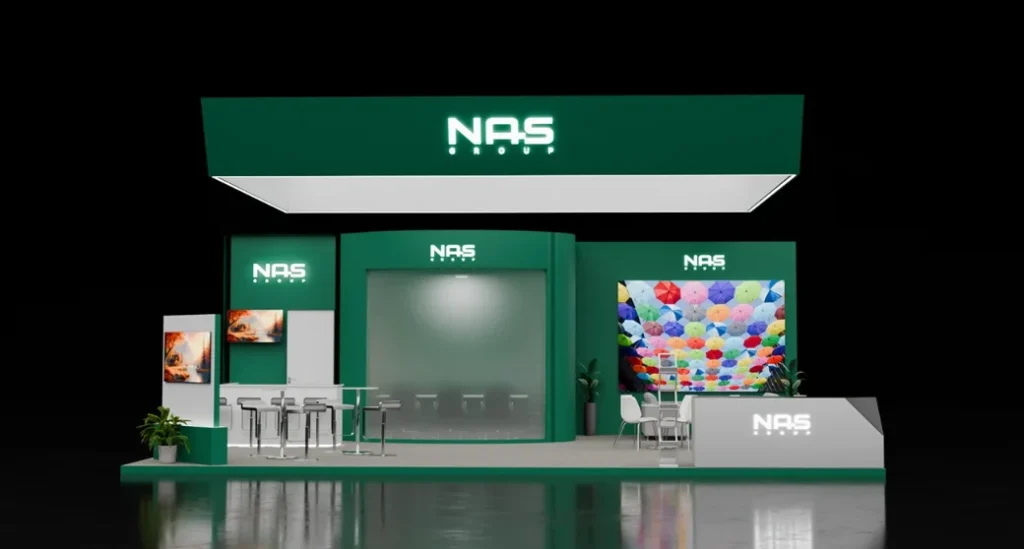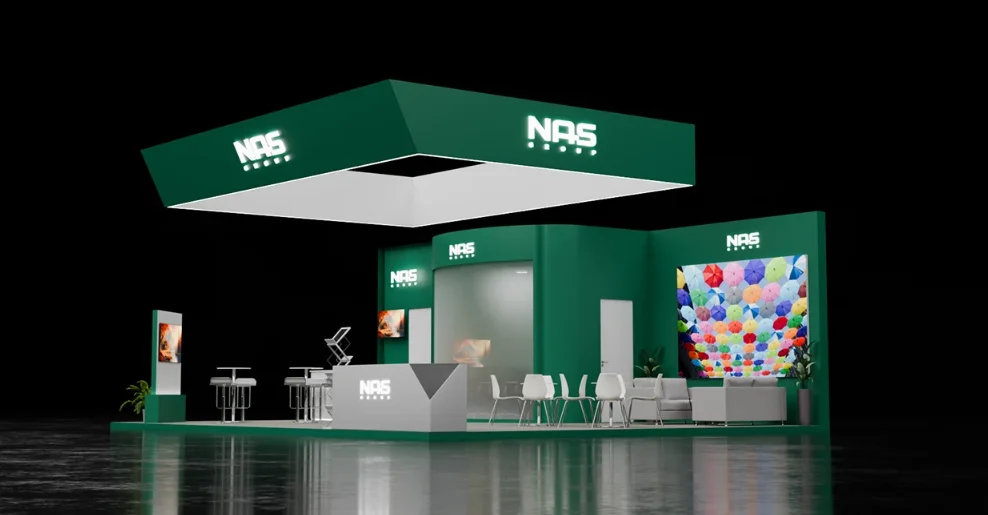In the modern, busy age of exhibitions, trade shows, and corporate events, it is necessary to stand out. Companies just have seconds to attract the attention of people who pass through rows of stalls.
An effective design of your stall will be able to do the trick in capturing the attention of your target customer and creating memories. But what would you do to make sure that your stall would be not only attractive to the eye, but also operating flawlessly? The answer lies in 3D design.
What is the 3D Design of Stall Fabrication?

The term 3D design is an example of designing a three-dimensional, digital image of the stall before it is made in reality. This design is created through special software, as it gives the designers an opportunity to see the whole picture of the stall, including the layout and the materials used, all of that in the virtual world, and the event planners and business owners can make the necessary changes before the fabrics are produced.
Why is 3D Design important in Stall Fabrication?
Although the 2D drawing or conceptual drawings have been employed in the past, 3D design brings stall fabrication to a whole new level. This is what makes 3D design critical in ensuring that the process of fabrication of stalls is a success:
Imagining the Final Product Before the Process

Among the most significant advantages of 3D design in stall fabrication, one can distinguish the possibility to see the final product in the finished state without starting any physical work. Historically, the designs were designed around drawings, which may not necessarily be able to present the complications of a 3D space.
Due to the 3D design, the stall model can be viewed from different angles and perspectives, which makes it a lot easier to determine possible problems or improvement areas.
This visualization capacity will make sure that the design will be consistent with your brand image, marketing goals, and your event needs, and will eliminate the possibility of making last-minute adjustments in the design process as the structure is being built.
Increasing Design Accuracy and Precision.
The advanced software that is used in the creation of the 3D designs makes sure that the measurements are accurate and that the scaling used is precise. Such accuracy gives an opportunity to produce a perfect fabrication procedure, where all the components fit perfectly into place. Everything, including the arrangement of displays, electric systems, and interactivity, is taken into consideration during the design.
In the absence of the 3D design, the fabricators can rather make rough estimations or use the old techniques of taking measurements, which can be costly, time-consuming, and end up not being satisfied with the end product. The correct 3D visualization reduces all these risks and will guarantee that the stall will be operational and work per your specifications.
Testing to Uncover Alternative Plans and Set-ups

In creating a stall, in most cases, trial and error is involved in determining the most effective layout. 3D design enables one to quickly experiment with different layouts and designs without necessarily having to make physical prototypes.
Just want to know how the furniture appears in one corner as compared to another one? Or what will a display wall look like under other lighting? All this and more can be achieved with a couple of clicks with 3D design.
Through testing of various layouts in a virtual environment, you are able to determine the best layout that will maximize foot traffic, viewability, and interaction, as well as ensure that your stall flows well.
Such flexibility gives the ability to test various ideas without having the risk of wasting time and resources due to ineffective designs.
Cost and Time Efficiency
The costs of changing the design of a stall after the fabrication is already underway can be prohibitive and time-consuming. In the 3D design, any required modification or alteration can be digitally made, and thus it can save time and money.
It can be fine-tuning a lighting arrangement, the content of a wall, or even resizing a display; 3D design allows one to see the effects of such changes easily before deciding on the real construction.
Identifying any problems at the initial stages of the design process will save you the hassle of paying extra money in order to fix the error and save time, especially during the event.
Two-way Communication with Clients and Stakeholders

Stall fabrication is an art that requires a partnership between the designer, fabricator, event manager, and the client. 3D design is a definite pictorial communication tool among all parties.
You do not have to use verbal descriptions or drawn-in 2D images; instead, you can introduce your client to a detailed 3D model where he/she can interact.
This enables the clients to give real-time feedback, questions, and proposals. The outcome is a more cooperative and transparent process, which means increased satisfaction and a quality end product.
Effective Brand Identity Presentation.
Each exhibition booth is an avenue for a brand. It is a real space in which you can display the values, products, and services of your company to a specific audience using 3D design. You can add your elements of branding, such as logos, color scheme, and marketing materials, to the stall design during the design process itself.
Through 3D design, you can be sure that your stall conveys your brand message and is more noticeable than the other competitors. It could be in dynamic lights, interactive screens, or strategically positioned signage; 3D design can be used to make your stall have a greater impact.
Problems should be resolved in advance.
When using traditional design, the problems that would be encountered may be known at the point of construction, and this causes delays and high costs. In 3D design, issues can be determined and sorted out at an early stage of planning.
As an example, you may find out that the space to house the essential equipment is not enough, or some materials may not fit the environment.
With the ability to view the whole stall in three-dimensional mode, one can fix these problems at the earlier stages, even before the production is commenced, so that the end product is not only practical but also pleasing to the eye.
Virtual Tours and Presentations to Clients.
Virtual tours around the stall can be done by 3D design as well. This enables the clients to virtually tour their stall design and have a better idea of what the final product will look like.
Client presentations can also be based on virtual tours, which can be argued to be much more dynamic and engaging than a mere picture or a 2-dimensional sketch.
These virtual walkthroughs can be invaluable during client presentations, and thus, it becomes easier to get approvals, sell ideas, and meet the expectations of the clients.
How To Future-Proof Your Stall Design.
The tools for creating the exhibition design keep on changing as the trends in exhibition design change too. More dynamic, interactive, and innovative designs of the stalls can be created with the help of the tools of 3D design.
This will future-proof your design process by undertaking 3D design at the early design stage, which will guarantee that you are leading the pack on the latest technology and design trends.
Virtual Prototyping Eco-Friendly Design.
The design using 3D also enhances sustainability in the fabrication of the stalls. Rather than creating actual prototypes or mock-ups, 3D design software can be virtual.
This will save on the raw materials that were required and it will assist in reducing waste, which will make your stall fabrication process more friendly and sustainable.
Conclusion
With its 3D design, the business of designing the stall has been revolutionized, and it has become a more intelligent and efficient method of designing exhibition stalls. The fact that you can visualise, experiment, and make changes digitally makes sure that your stall will not just look good, it will also work perfectly.
The 3D design has become a key resource in the quest to develop a memorable and impressive exhibition experience due to enhanced communication between one and clients as well as cost and time savings.
